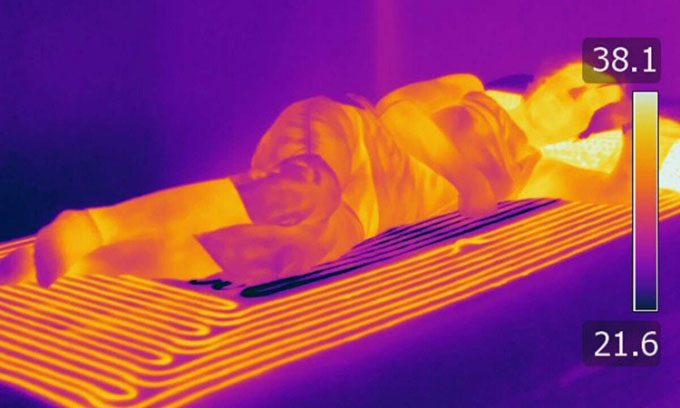Researchers Develop Smart Mattress with Specially Arranged Heating and Cooling Components to Promote Sleep Onset.
According to the body’s circadian rhythm, human body temperature begins to drop as bedtime approaches. Based on this principle, a team of scientists at the University of Texas at Austin has developed a smart mattress designed to help people fall into deep sleep, yielding promising results from preliminary trials. The new study was published in the journal Sleep Research on July 19.

The smart mattress warms and cools specific body parts in a certain arrangement, providing a restful sleep. (Photo: University of Texas Austin)
The mattress can trigger feelings of drowsiness in users through carefully arranged heating and cooling components. The research team stated that lowering the internal body temperature at night can signal the body that it is time to sleep, but this must be done cautiously and systematically.
The mattress features dual temperature zones and heated pillows designed to cool the central areas of the body while warming the hands, feet, and neck—key “temperature regulators” in humans. This promotes blood circulation and improves the body’s heat dissipation process, thereby regulating body temperature more effectively.
“Notably, gentle warming along the cervical spine is very effective in sending signals to the body to increase blood flow to the hands and feet, which in turn lowers core temperature and promotes prolonged sleep. This also results in a slight reduction in blood pressure overnight, helping the cardiovascular system recover after stressful work to maintain blood circulation during daily activities. This effect is crucial for long-term health,” said research author Kenneth Diller.
The team conducted a small trial involving two versions of the mattress with 11 volunteers, one version utilizing water and the other using air to control body temperature. Volunteers were asked to go to bed two hours earlier than usual. The research team activated the heating and cooling functions on certain nights. As a result, the heating and cooling functions helped volunteers fall asleep approximately 58% faster compared to nights without activation, leading to improved sleep quality.
The research team hopes to continue developing the smart mattress by collaborating with mattress companies to produce a commercial version. They have also filed a patent application for the new technology.



















































